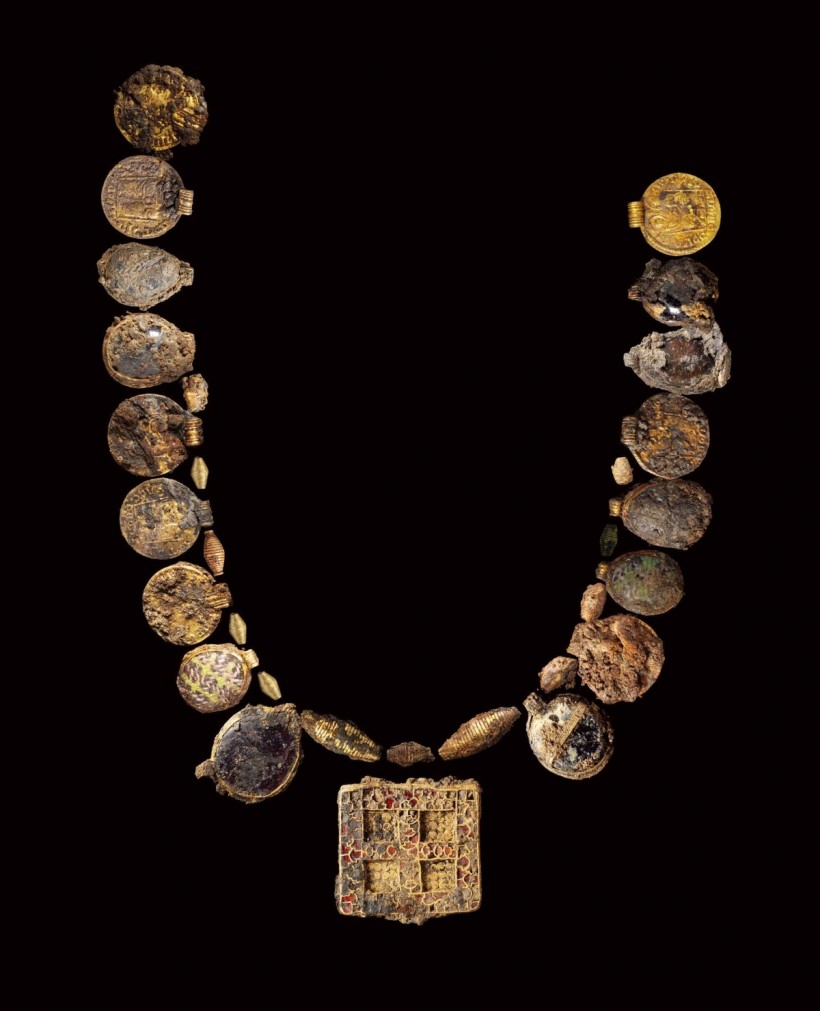Archaeologists from London have unearthed an extremely rare necklace that dates back to 1,300 years ago in Northamptonshire. This necklace is so rare that it is considered a "once -in-a-lifetime" find.

(Photo : MOLA/ Hugh Gatt)
Archaeologists discovered what is regarded as the most remarkable female Early Medieval burial ever discovered in Britain.The necklace, which dates to between 630 and 670 AD, was found among other intriguing grave goods in an elite female burial that is still under investigation.
The Richest of its Kind
This necklace has at least 30 pendants and beads composed of Roman coins, glass, rare stones, garnets, and gold - making it the richest of its kind ever discovered in Britain, according to the MOLA (Museum of London Archaeology).
The rare find was uncovered alongside other intriguing grave items from a high-status female burial, which is still under investigation.
This is the most significant female burial from the historical period to have been unearthed in Britain, according to experts.
It has been given the name "Harpole Treasure" based on the name of the surrounding parish where the discovery has been made.
The largest and most elaborate component of the discovery is a rectangular pendant with a cross motif made of red garnets and gold that serves as the necklace's focal point. MOLA experts think it was once a hinged clasp and was then reused.
A shallow copper dish and two ornamented pots were also found in the burial. A beautiful and ornately adorned crucifix with uncommon images of human faces cast in silver was discovered after x-rays were examined on blocks of earth removed from the burial.
The MOLA Conservators are currently micro-excavating the dirt blocks, but this substantial and elaborate object shows the woman may have been a prominent early Christian figure.
The combination of the burial goods, however, suggests that this was a high-status woman, either royalty or an abbess-or even both.
Once-in-a-Lifetime Discovery
"This find is truly a once-in-a-lifetime discovery - the sort of thing you read about in textbooks and not something you expect to see coming out of the ground in front of you. It shows the fundamental value of developer-funded archaeology," RPS Archaeology Consultant Simon Mortimer said in a press release statement.
The discoveries are being examined and conserved by MOLA Conservators, this includes locating and documenting any signs of organic remains in the grave and on the artifacts' surface.
MOLA said that it is likely that the corpse was positioned on a bed inside the grave, and remnants of the bedding may be discovered. Remains from the use of artifacts in daily life or during the burial ritual could also be found through analysis.
There was one other burial nearby, but it was neither clearly dated nor had any high-status grave items. Archaeologists are certain there is nothing new to discover after thoroughly exploring the entire site.
There have been a few such necklaces from this period found in other parts of England, but none are as elaborate as Harpole, making it a "once-in-a-lifetime" discovery indeed.
Related Article: Archaeologists Unearth Hundreds of Mummies on the Pyramid of a Mysterious Queen in Egypt









